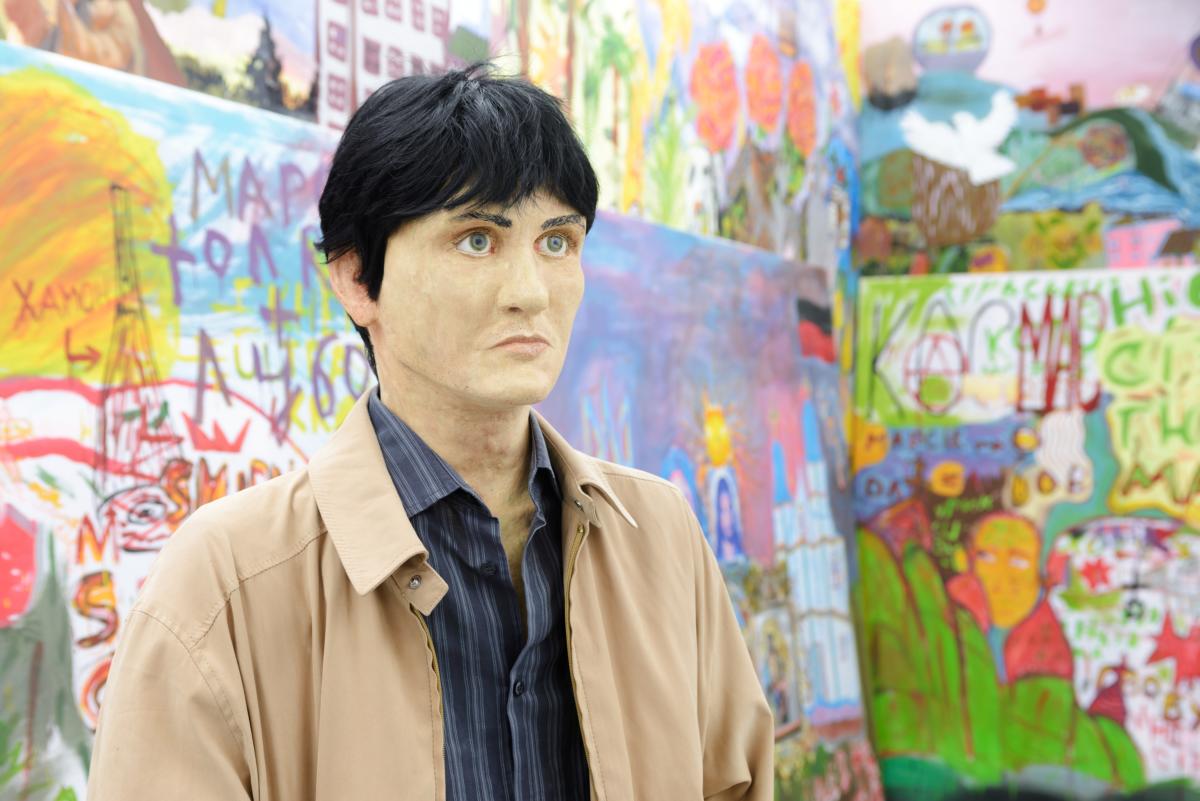
Alina Kleitman, Ask a Mom, 2017-2018
The entrance to the exhibition is covered with fur coats. Such amount of fur, fully enveloping one’s body, makes one feel strange, as if one was lost inside somebody’s intestines. In the following dark halls, everything is hypertrophied. The videos show us close-ups of a woman clearing her heels, stomping her foot angrily, or looking downward with evident contempt while somebody unseen laughs loudly and nervously on background. The object – an enormous yellow glove – only tightens the mood. It keeps deflating and inflating, making us realise that there is somebody else here who has got more power than us-viewers. The artist puts a spectator into the conditions that make him or her feel vulnerable and coerced. The piece raises painful issues that to some extent always accompany the mother-child relationship. “Asking Mom” is something a child wants to do the least sometimes, or is even scared of doing. Naturally, we want to get out of this coercion, but it is not so easy: the way back leads through the fur again, with the coats obstacle seeming even tighter than it was before.
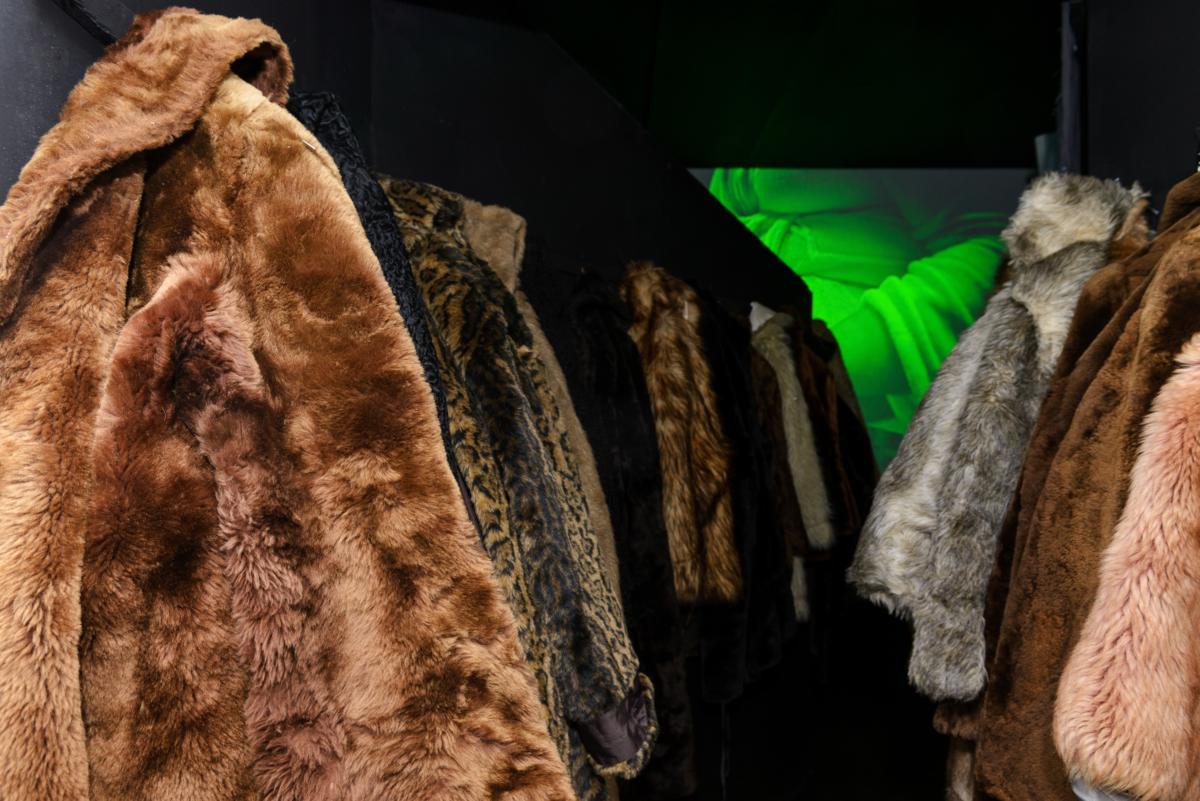

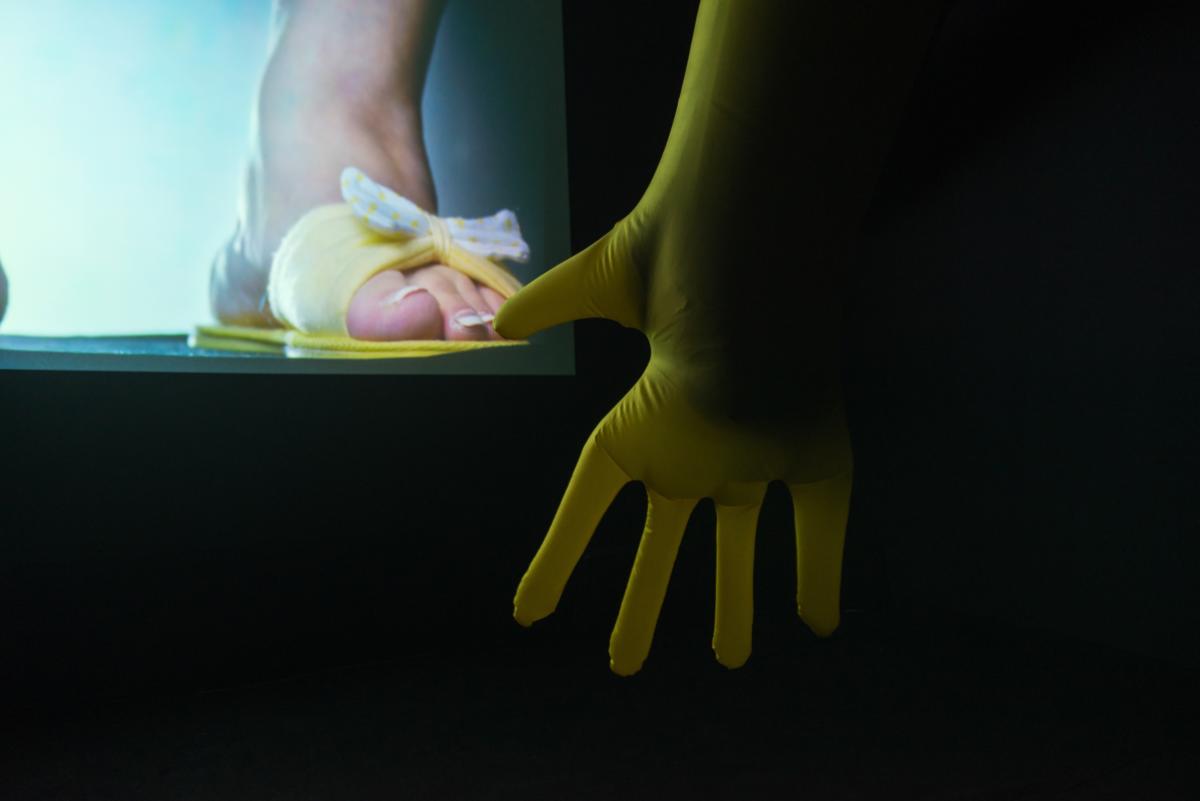
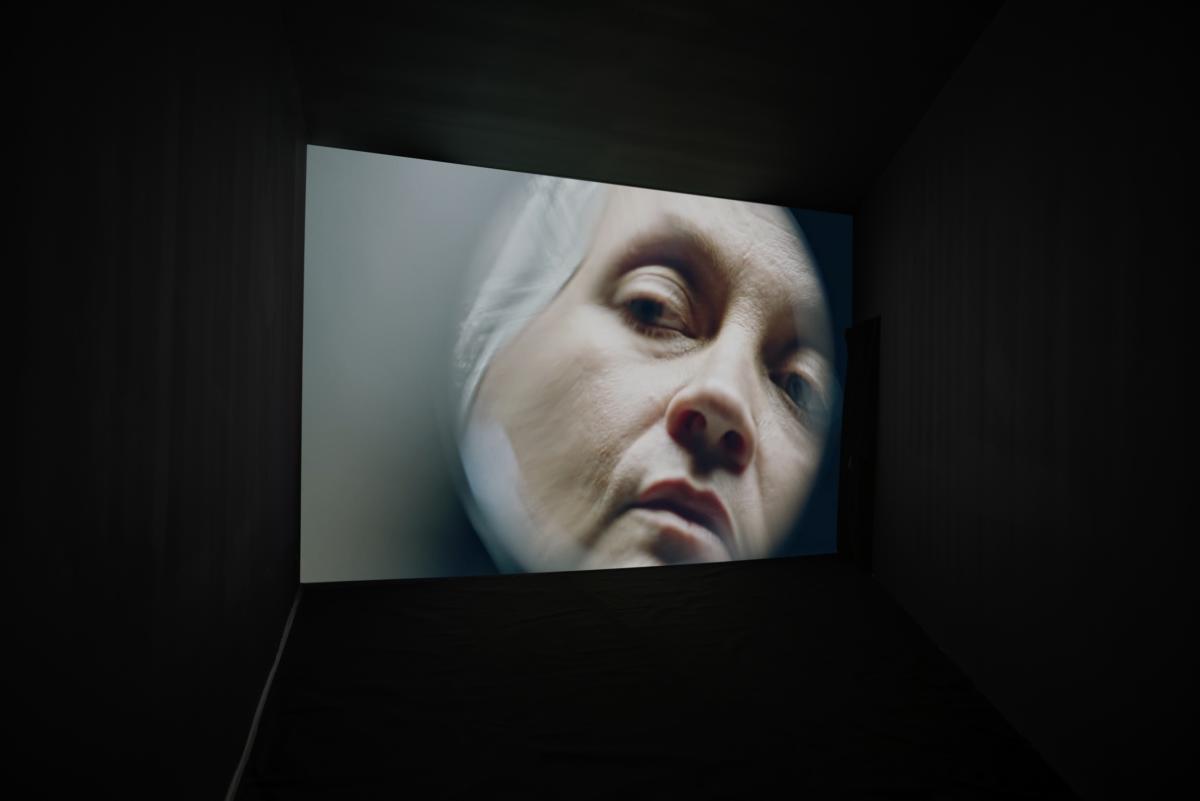
Mykhailo Alekseienko, Startup Troeshchyna, 2018
Troeshchyna is a remote residential neighborhood of Kyiv, with the usual set of real problems and imaginary stereotypes. However, Mykhailo Alekseienko’s cover photo on Facebook represents a world map with a route from TROESHCHYNA to HOLLYWOOD marked in red, which unequivocally emphasizes high ambitions of this neighborhood. Indeed, the neighborhood has been drawing attention of artists and curators, not least because the artist himself lives there and maintains Kvartyra14 gallery in one of the rooms of his apartment. Thus, the artist establishes his own start-up, providing the visitors with an opportunity to support it and turn it into a more stable institution. The crowdfunding campaign aims to gather 200 thousand hryvnias (7,5 thousand US$) to stimulate cultural and creative processes in the neighborhood. Any person can put his or her contribution into a 3-liter jar and take a keepsake in return: a postcard, a pin, or a sketch by the artist. Though just a week has passed, the jars have become much fuller.


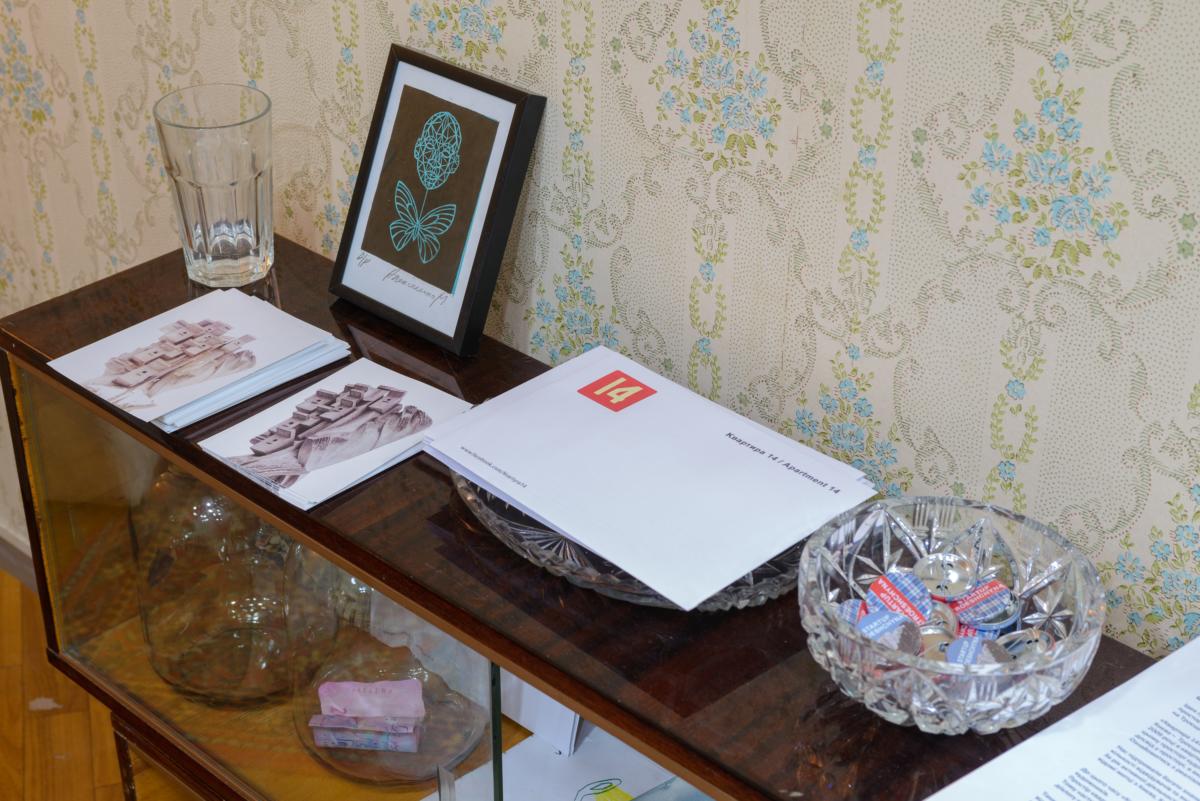
Katerina Yermolaeva, Me, Myself and I, 2018
In her practice, the artist develops various characters and temporary takes on their roles. The dramaturgy of the exhibition takes the visitor from one imaginary room to another, all rooms occupied by different heroes and heroines: from “a goodie girl or a brave protector to reckless lovers of having a good time.” The artist looks for “different selves” and finds them in different social types, raising the issue of a fragile and volatile self-identity. On the one hand, wearing all these disguises, concealing her age, and changing her sex are all the desperate attempts to live through various lives and to attain various experiences. Still, the piece is called “Me, Myself and I” for a good reason: it seems that the only person is hidden beneath all these images, remaining the same and alone, despite all the superficial changes.
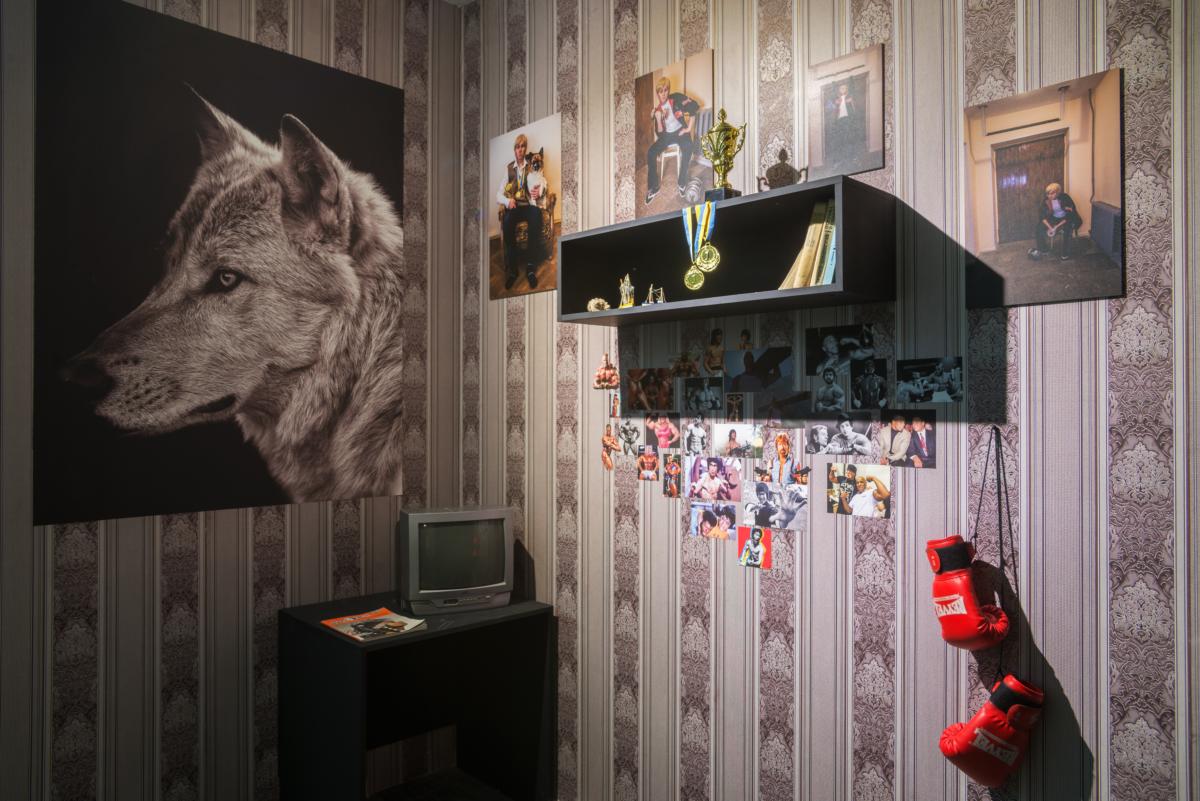
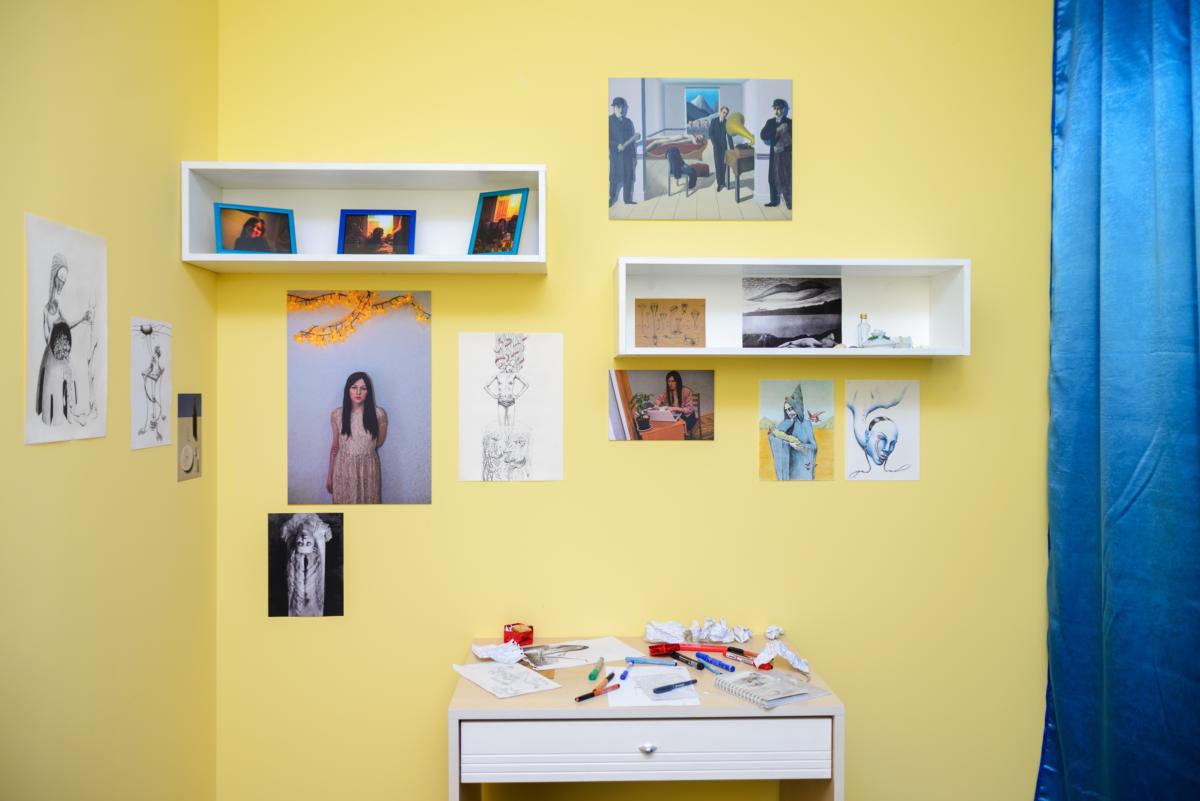
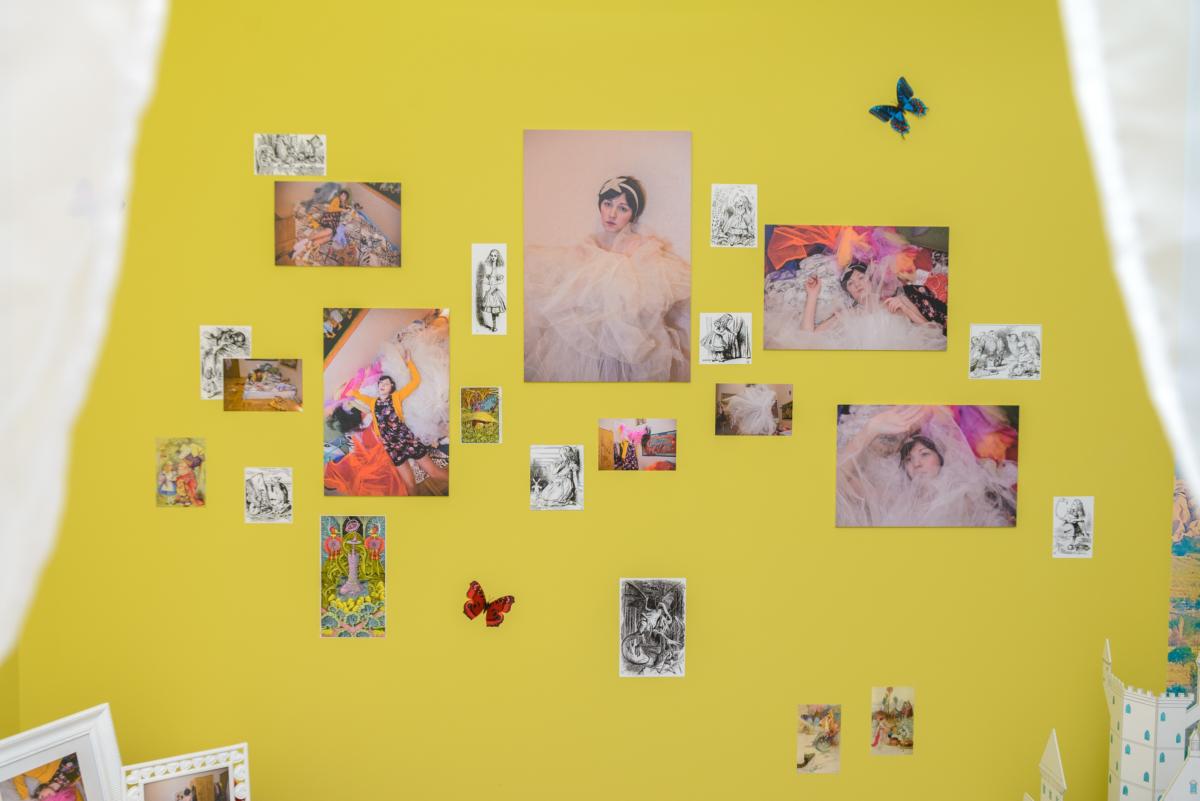
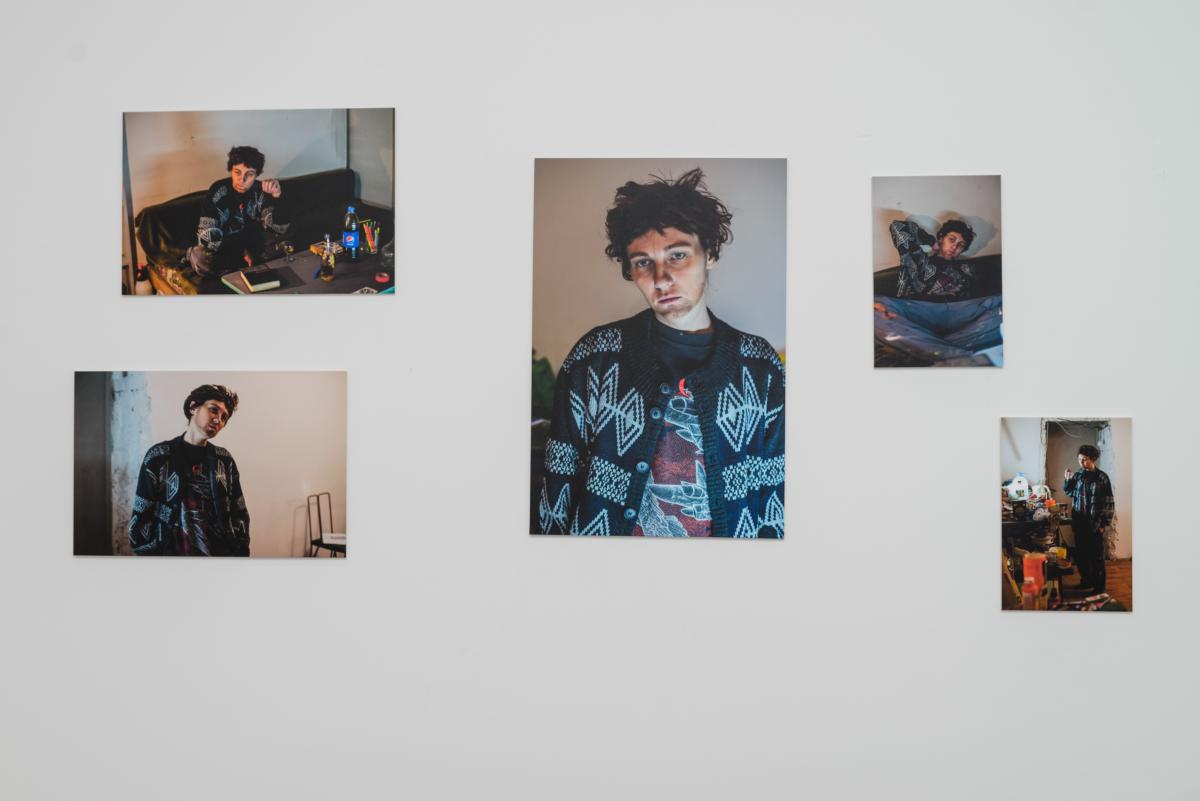
Anna Zvyagintseva, Scratches, Dusty Glasses, Found Drawings, 2017–2018
A white room, overfilled with light, contains three pieces. The lightboxes present the series of photographs that the artist calls “Found Drawings”: a result of repetitive unconscious actions of various people during a long period of time. The artist catches a single instant of this uncontrolled process, which has no known beginning or ending. One of the examples of such processes is a collective “drawing” made by those who buy pens in stationary shops, testing them before buying. Opposite to the lightboxes, there is a similar drawing made from a flexible material, scaled, and put on the floor as on a sheet of paper. The lines made from a plastic material are spread in such a way that a viewer becomes included in this drawing as well. On the other hand, the presented object “Dusty Glasses” (the glasses with lenses covered with dust) radicalizes the proposed theme: the lost functionality of the glasses most obviously appeals to the problem of hindered seeing and thus to the constant necessity to check one’s optic and point of view, as well as to the importance of reflection and the question “Do I really see what I see?” The object emphasizes the problem of unconscious action, which can appear as harmless only at the first glance, instead potentially causing irreparable harm.
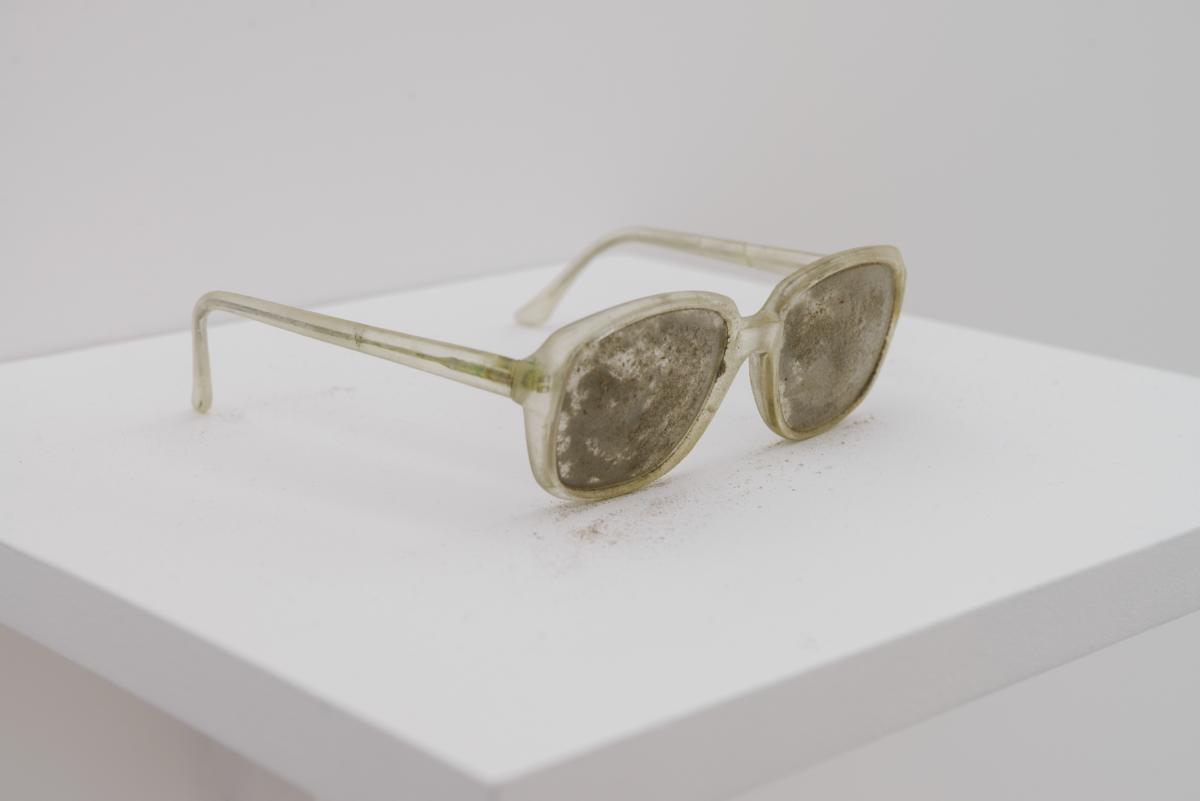
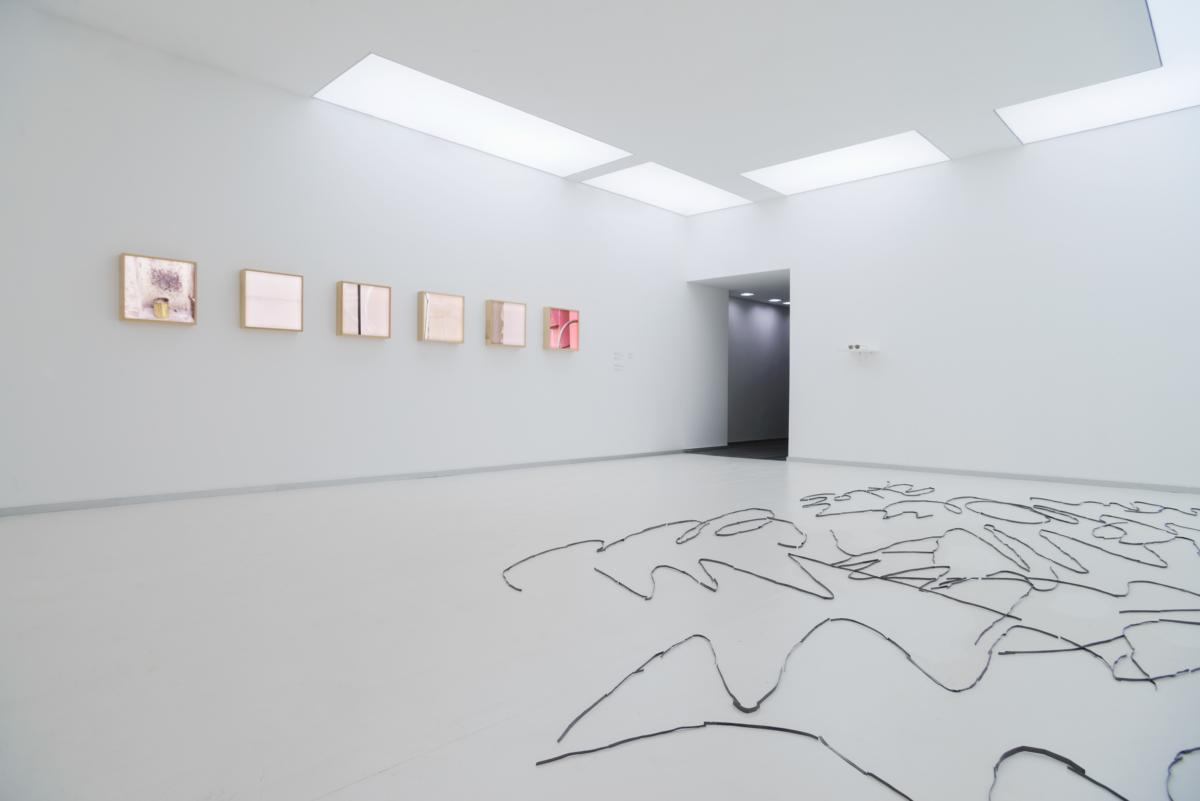
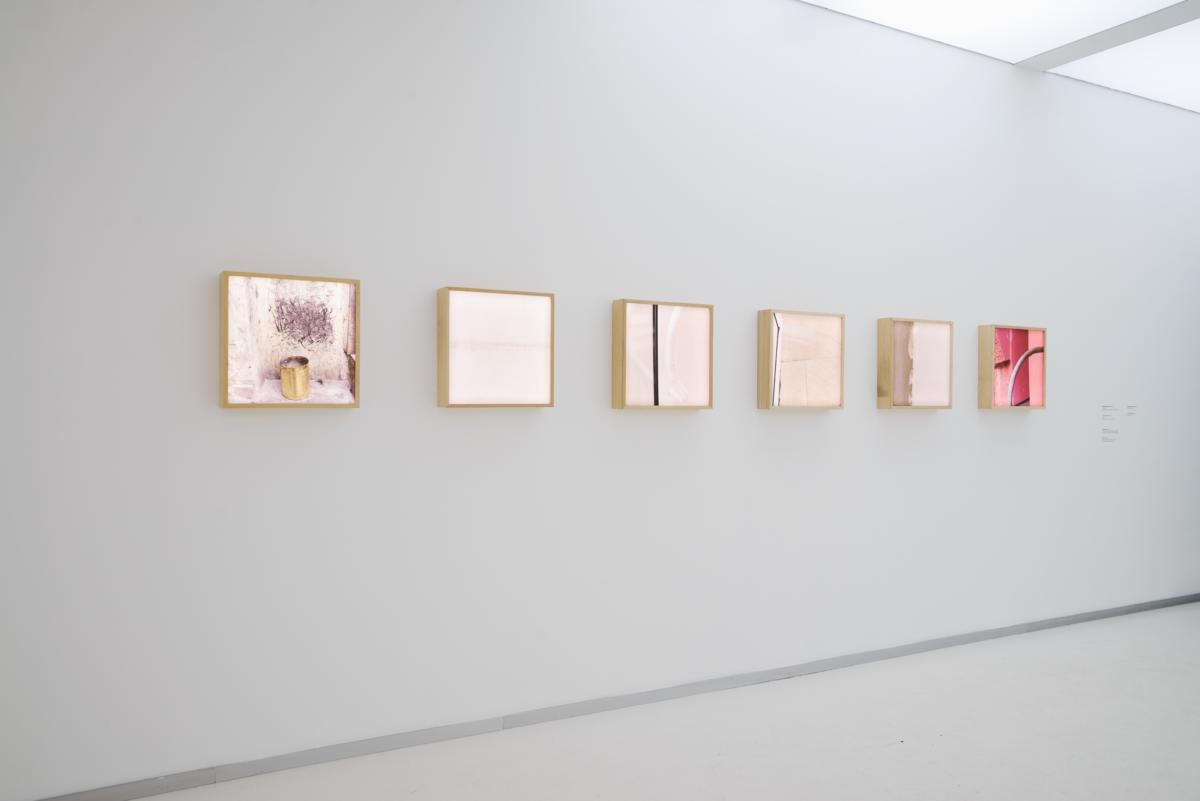
Sasha Kurmaz, A Chronicle of Current Events, 2017-2018
The project consists of a destroyed room which was probably robbed: a direct allusion to the war in the Eastern Ukraine. One of the walls bears an inscription “All your sacrifices and victims were vain,” which dominates the exhibition containing the documentation of an action at one of the abandoned cemeteries in January 2018. This image challenges a viewer with a question: who is responsible for these sacrifices and victims? And who allowed them to remain vain? Next, our gaze moves to the series consisting of 12 photographs: these are the pictures of everyday peaceful life shot every month during one year. However, a new layer of meaning emerges from the surface of these pictures: black squares superimposed on the figures of the persons. This “pasting over” is a metaphor of the soldiers killed in the Eastern Ukraine, and the date in the corner of each photo is a date of death of a particular person. The critical view of the artist allows for the two parallel realities where Ukrainians live to juxtapose. The chronicle of 12 months is embodied in these 12 photos, completing the year’s cycle, and enters into a dialogue with a video loop “I Don’t Dream Anymore,” in which we see a close-up of a person’s hands trying to scrub off dirt, to no avail.
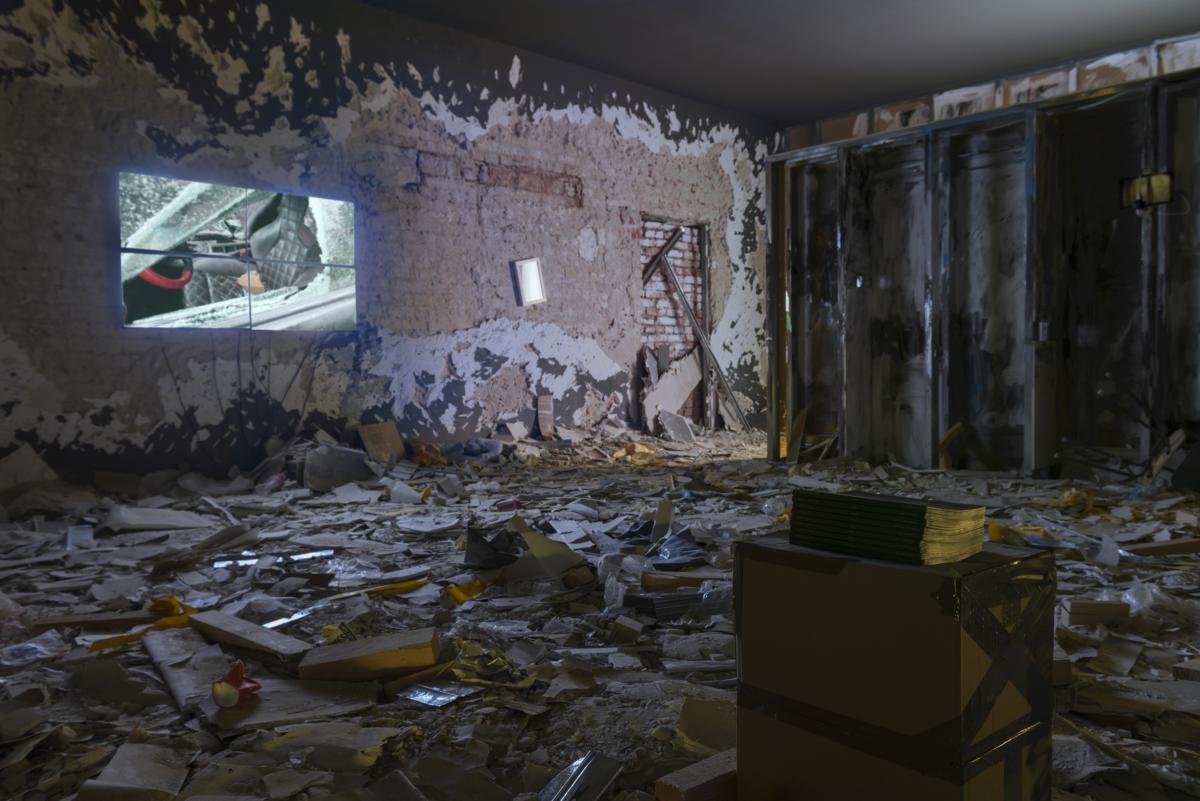
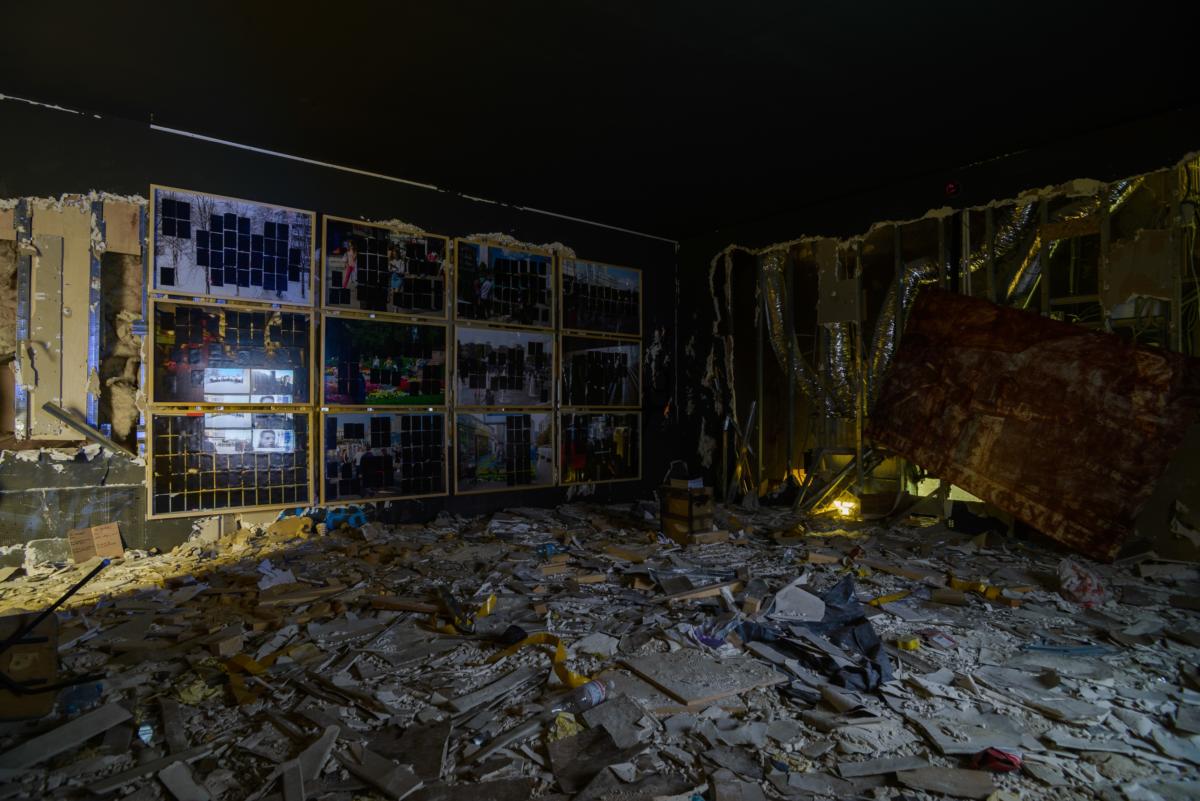
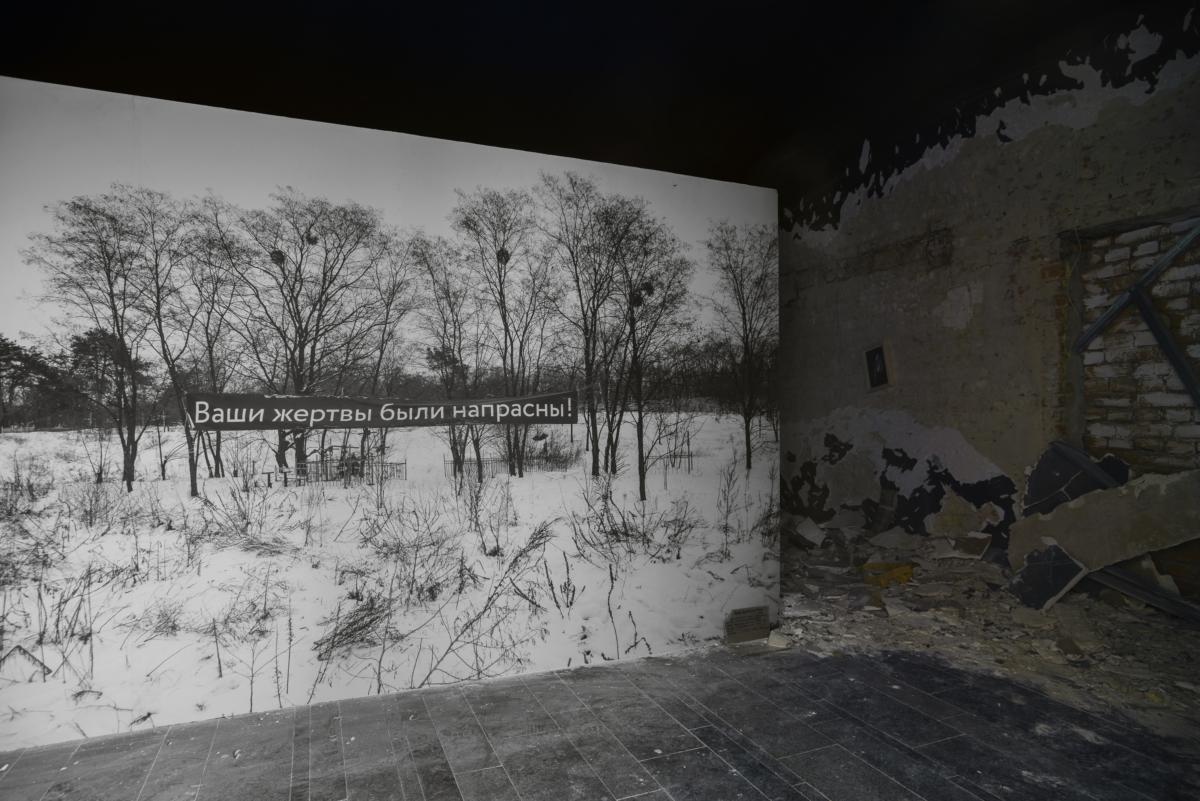
Yevgen Samborsky, Laboratory of Friends, Father, 2016 – 2017
The artist who had closely collaborated with Pawel Althamer for a long time continues to implement participative strategies in his practice. Samborsky’s project is a result of his collaboration with the children living at a social rehab center, the patients of a psychiatric institution, and Gypsies. During their interactions, the artist and the other participants drew pictures, made objects, and painted together. These pieces, as well as the documentation of the process of collective creation, are presented in the exhibition. Also, the artist has created the sculpture of his father in youth and added it to the former piece. “This helped me understand him better,” says Samborsky. The project is a sincere attempt on behalf of the artist to decrease the feeling of alienation that burdens the marginalized social groups through the process of collective creation. Besides, it is hope to find the lost heart of the society.
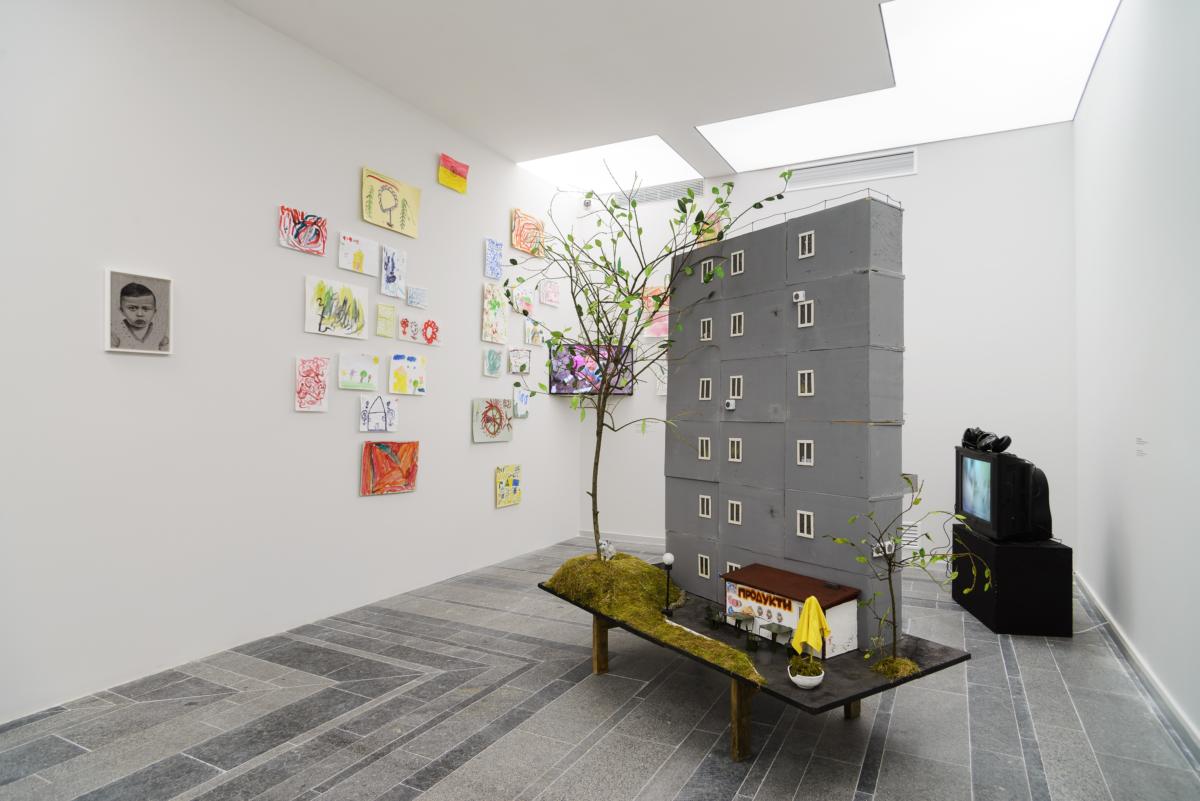

Translated from Ukrainian into English by Arseniy Tarasow
Imprint
| Artist | Mykhailo Alekseienko, Iuliana Golub, Taras Kamennoi, Mykola Karabinovych, Pavlo Khailo, Alina Kleitman, Vitalii Kokhan, Iuliia Kryvych, Sasha Kurmaz, Larion Lozovyi, Roman Mikhaylov, Yevgen Samborsky, Dmytro Starusiev, Ivan Svitlychnyi, Ekaterina Yermolaeva, Anna Zvyagintseva, Yarema Malashchuk, Roman Himey, Revkovskiy and Rachinskiy |
| Exhibition | PinchukArtCentre Prize 2018 |
| Place / venue | PinchukArtCentre, Kyiv |
| Dates | February 24 – May 13, 2018 |
| Curated by | Tetiana Kochubynska |
| Photos | Maksym Bilousov |
| Website | prize.pinchukartcentre.org/en |
| Index | Alina Kleitman Anna Zvyagintseva Katerina Yermolaeva Mykhailo Alekseienko Sasha Kurmaz Yevgen Samborsky |
